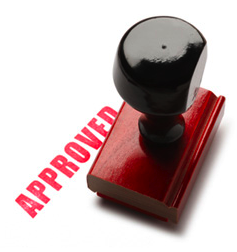
First get pre-qualified and then get pre-approved.
The terms pre-qualified and pre-approved are not interchangeable. Many people make the mistake of starting to look for a new home by starting to look. However, the best place to start your home search is actually at your bank. A quick visit to your bank will save you time in the long run when you first determined how much house you can afford. This means meeting with your banker or mortgage specialist to review your income and assets and the current mortgage rates and terms to determine the actual amount you would qualify for. With this information, you can begin your home shopping and focus your efforts to find the best home for your money.
What’s the difference between pre-qualification and pre-approval?
The terms pre-qualification and pre-approval are not interchangeable. When a homebuyer is pre-qualified, the lender performs a quick check to determine how large a mortgage the buyer can afford. The banker or mortgage broker looks at basic information on income and balances of payments on current debts and how much money has been saved for a down payment. Qualifying ratios are applied to those figures to determine what percentage of your gross monthly income can be used to pay for the mortgage and attached expenses. Essentially, when pre-qualified, the lender is saying it would “most likely” approve the buyer for the amount.
Pre-qualification is an approximation, an educated guess at what the borrower can afford.
Pre-approval, on the other hand, goes much deeper. During pre-approval, the lender examines and verifies your debt, income, savings, assets and credit report to ensure you can repay the loan amount. Where pre-qualification is a sort of educated guess of the buyer’s purchasing power, pre-approval says the prospective borrower would definitely be approved for the loan.
The pre-approval process looks at documentation. The lender is trying to confirm how much you earn, your savings and your other financial assets. The loan officer will ask you for a number of documents ranging from pay stubs to bank statements to investment account statements. Also, the lender will order a credit report to check your credit rating.
Your documentation will then be reviewed against various qualification requirements, and, when it has been determined that you meet them, you will be pre-approved for the loan. Your lender will provide you with a certificate stating that you are pre-approved for the amount. You’ll also be given a good faith estimate detailing the amount and terms of the loan, such as closing costs and whether the loan is fixed or adjustable.
There is a caution. While the lender is saying it will approve you for the loan, a pre-approval is still not a guarantee that it will do so. Other factors can affect the lender’s ability to fund a home’s purchase, such as the results of the home appraisal, proper insurance and titling, so while the lender says it has approved you for the loan, it cannot commit to the financing 100% until it has reviewed the home you decide to buy.
A pre-approval certificate is an incredibly powerful bargaining tool. Home sellers are cautious about accepting offers, because so many buyers’ funding can best be described as “tenuous.” The last thing they want is an offer from a seller that doesn’t truly have the necessary funding.
With a pre-approval certificate, the seller can have complete confidence that the offer you make will be one they can rely on and you can get the house you want and can afford. That’s a win-win.




